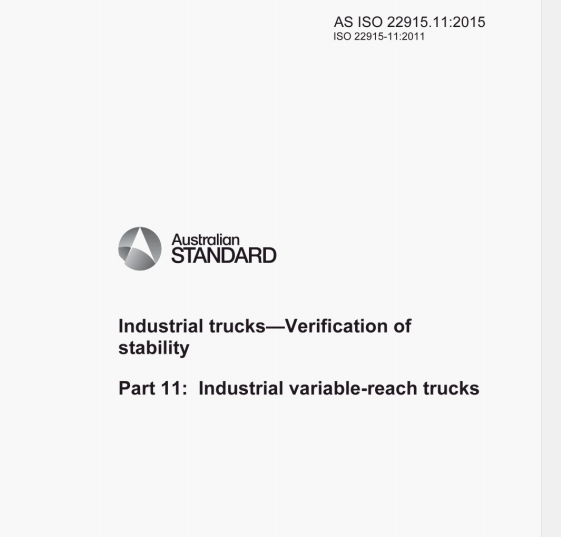AS ISO 22915.11:2015 pdf – Industrial trucks- Verification of stability Part 11: Industrial variable-reach trucks.
c) For trucks with axle locking: point M shall be the centre point of the area of contact between the tilt table and the rear wheel nearest to the tilt axis, X—Y, of the tilt table (see Table 1).
As shown in Table 1, point N is defined as the centre point of the area of contact between the tilt table surface and the load wheel (or stabilizer pad, if fitted) closest to the tilt axis, X—Y, of the tilt table.
4.3 Test load
Tests 1 and 3 shall be conducted with the test load in the least stable combination of lift and reach, with the fork arms in the horizontal position.
Test 5 shall be conducted at maximum and minimum boom extensions, at the maximum boom angle and with the fork arms in the horizontal position.
See Table 1.
4.4 Lift height
For tests simulating travel, i.e. Tests 2 and 4, the upper face of the fork arms, measured at the heel of the fork arm when fully tilted rearward, shall be positioned
— 300 mm above the tilt table for trucks of 10 t rated capacity or less, and
— 500 mm for trucks of greater than 10 t rated capacity.
See Table 1.
4.5 Lateral test procedure
For trucks fitted with selectable stabilizers and/or axle locking, Tests 1 and 3 shall be conducted both with stabilizers/axle locking engaged and disengaged.
See Table 1.
5 Verification of stability
The stability of a truck shall be verified in accordance with Table 1.
6 Marking
The capacity under the operating condition, with stabilizers and/or axle locking engaged and disengaged. as determined by this stability test, shall be indicated on an information plate in view of the operator in the normal operating position according to ISO 3691-2.
AS ISO 22915.11:2015 pdf – Industrial trucks- Verification of stability Part 11: Industrial variable-reach trucks
